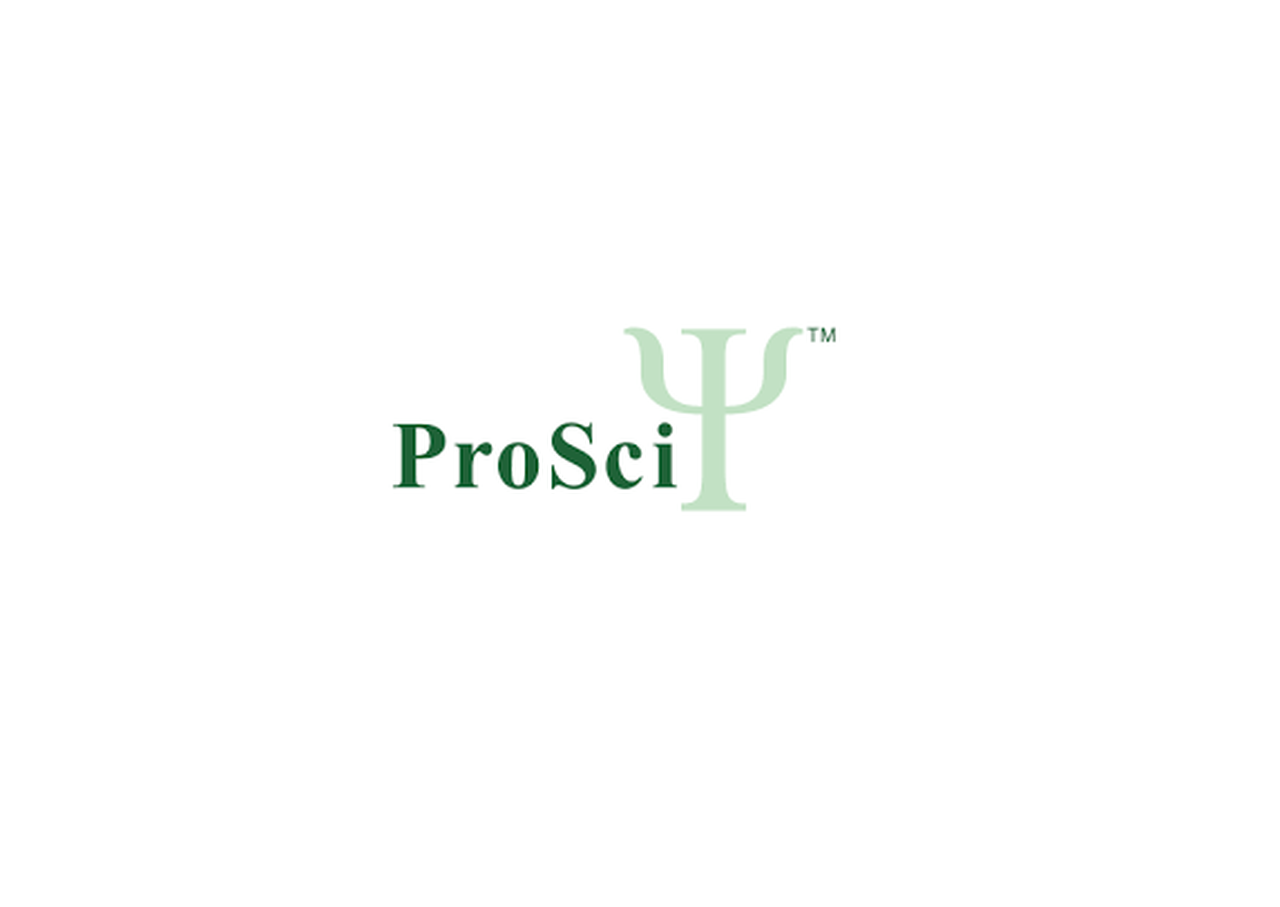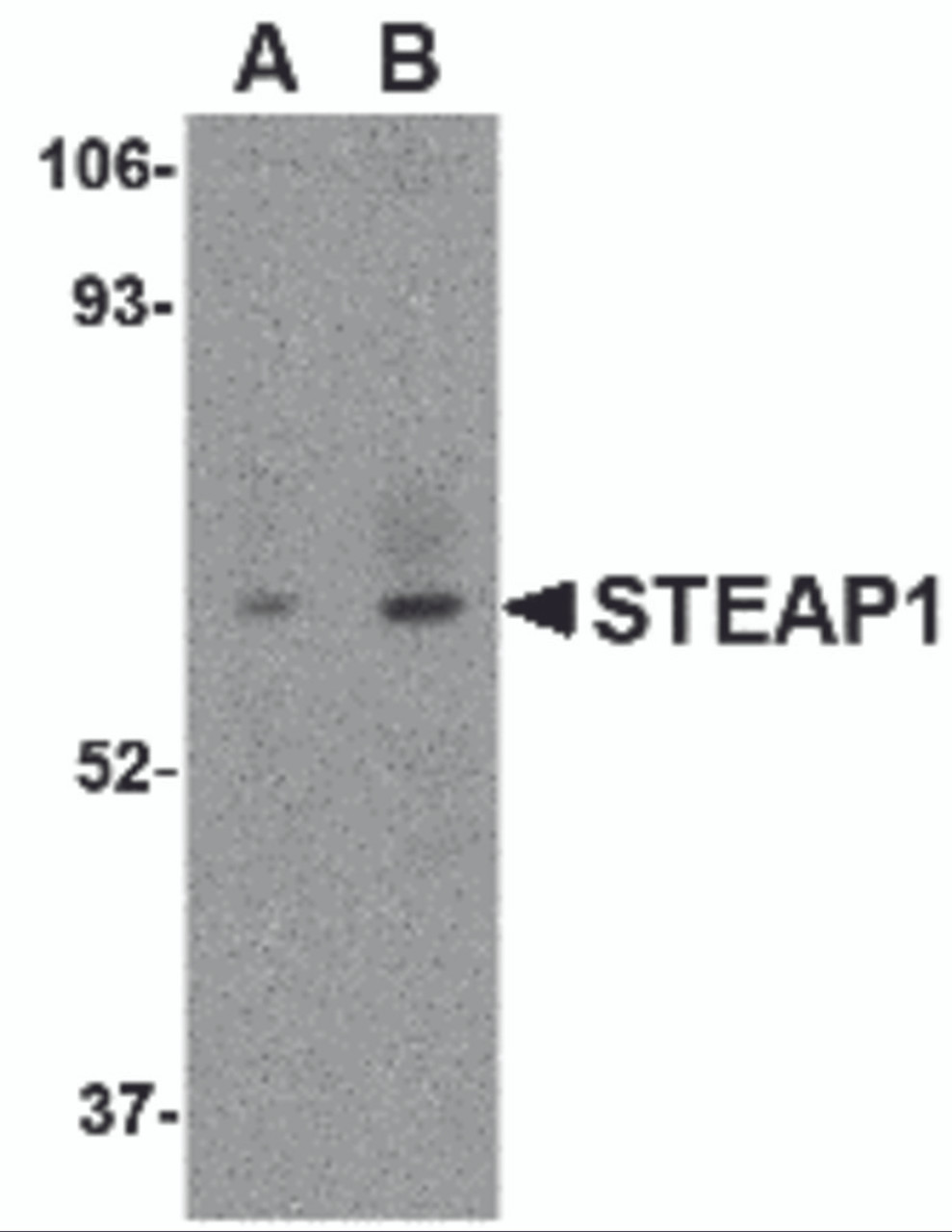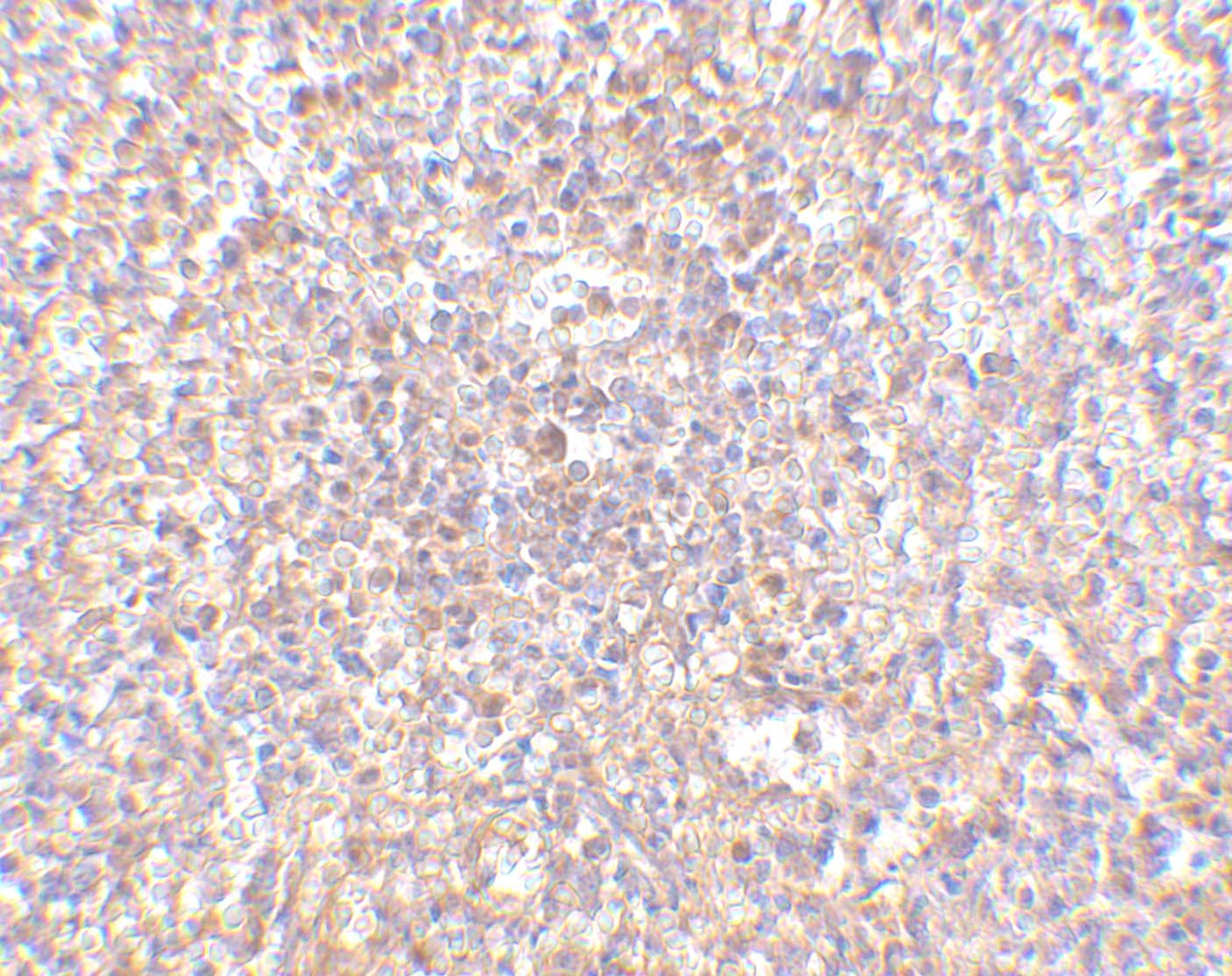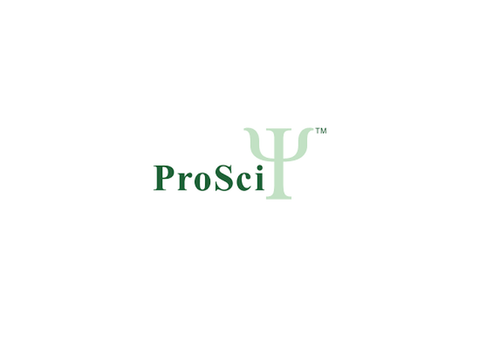Product Description
STEAP1 Antibody | 4303 | ProSci
Host: Rabbit
Reactivity: Human, Mouse, Rat
Homology: Predicted species reactivity based on immunogen sequence: Pig: (94%)
Immunogen: STEAP1 antibody was raised against a 18 amino acid synthetic peptide from near the carboxy terminus of human STEAP1.
The immunogen is located within the last 50 amino acids of STEAP1.
Research Area: Homeostasis, Cancer
Tested Application: E, WB, IHC-P
Application: STEAP1 antibody can be used for detection of STEAP1 by Western blot at 1 - 2 μg/mL. Antibody can also be used for immunohistochemistry starting at 2.5 μg/mL.
Antibody validated: Western Blot in human samples and Immunohistochemistry in human samples. All other applications and species not yet tested.
Specificiy: This STEAP1 antibody does not cross-react with other STEAP proteins.
Positive Control 1: Cat. No. 1306 - Human Spleen Tissue Lysate
Positive Control 2: Cat. No. 10-901 - Human Spleen Tissue Slide
Positive Control 3: N/A
Positive Control 4: N/A
Positive Control 5: N/A
Positive Control 6: N/A
Molecular Weight: N/A
Validation: N/A
Isoform: N/A
Purification: STEAP1 Antibody is affinity chromatography purified via peptide column.
Clonality: Polyclonal
Clone: N/A
Isotype: IgG
Conjugate: Unconjugated
Physical State: Liquid
Buffer: STEAP1 Antibody is supplied in PBS containing 0.02% sodium azide.
Concentration: 1 mg/mL
Storage Condition: STEAP1 antibody can be stored at 4˚C for three months and -20˚C, stable for up to one year. As with all antibodies care should be taken to avoid repeated freeze thaw cycles. Antibodies should not be exposed to prolonged high temperatures.
Alternate Name: STEAP1 Antibody: STEAP, PRSS24, STEAP, Metalloreductase STEAP1, Six-transmembrane epithelial antigen of prostate 1
User Note: Optimal dilutions for each application to be determined by the researcher.
BACKGROUND: STEAP1 Antibody: The six-transmembrane epithelial antigen of prostate 1 (STEAP1) was the first member of a family of metalloreductases identified as cell-surface antigens in prostate tissue. The normal function of STEAP is still uncertain; unlike other members of the STEAP family, STEAP1 does not promote iron or copper reduction or uptake and lacks the FNO-like reductase domain critical for activity. However, its expression is highly increased in multiple cancer cell lines, including prostate, bladder, colon, and ovarian cancers. Supporting this is evidence that STEAP1 peptides can be used to stimulate CD8+ T cells from healthy donors, enabling them to recognize STEAP1-positive human tumor cells, suggesting that STEAP1 may a potential target for cancer immunotherapy. At least three isoforms of STEAP1 are known to exist.
 Euro
Euro
 USD
USD
 British Pound
British Pound
 NULL
NULL
















